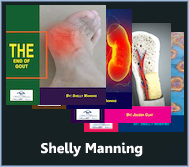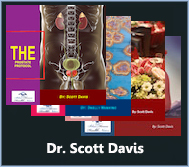What could be mistaken for TMJ?
Several conditions can be mistaken for temporomandibular joint (TMJ) disorders due to overlapping symptoms. Some of these conditions include:
- Dental Issues: Dental problems such as tooth decay, gum disease, or misaligned teeth can cause jaw pain and difficulty chewing, which may be mistaken for TMJ-related symptoms.
- Sinus Infections: Sinusitis or sinus infections can cause facial pain, pressure, and headaches, which may be perceived as TMJ-related symptoms due to their proximity to the jaw joint.
- Bruxism: Teeth grinding or clenching, known as bruxism, can lead to jaw pain, muscle tension, and tooth wear, resembling symptoms of TMJ disorders.
- Ear Problems: Ear infections, inflammation, or disorders of the middle ear can cause ear pain, discomfort, and pressure sensations, which may be misinterpreted as TMJ-related symptoms due to their proximity to the jaw joint.
- Headaches: Various types of headaches, including tension headaches and migraines, can cause pain in the temples, forehead, or behind the eyes, which may be mistaken for TMJ-related pain.
- Muscle Disorders: Muscle conditions such as myofascial pain syndrome or muscle spasms can cause jaw pain, muscle stiffness, and difficulty with jaw movement, resembling symptoms of TMJ disorders.
- Trigeminal Neuralgia: Trigeminal neuralgia is a neurological condition characterized by severe, stabbing pain in the face, which may be misinterpreted as TMJ-related symptoms, especially when it affects the jaw area.
- Arthritis: Arthritis affecting the jaw joint, such as osteoarthritis or rheumatoid arthritis, can cause pain, inflammation, and stiffness in the TMJ area, leading to symptoms resembling those of TMJ disorders.
- Stress and Anxiety: Stress, anxiety, and psychological factors can contribute to muscle tension, jaw clenching, and facial pain, which may mimic TMJ-related symptoms.
- Neck Problems: Neck disorders or cervical spine issues can refer pain to the jaw area, leading to symptoms that resemble TMJ-related pain.
- Fibromyalgia: Fibromyalgia is a chronic pain condition characterized by widespread musculoskeletal pain and tender points, which may include jaw pain and facial discomfort resembling TMJ-related symptoms.
Given the broad range of conditions that can mimic TMJ disorders, a thorough evaluation by a healthcare provider who specializes in TMJ disorders is essential for accurate diagnosis and appropriate management. A comprehensive assessment, including a medical history, physical examination, and possibly imaging studies, can help differentiate between TMJ-related symptoms and other potential causes of jaw pain and dysfunction. Treatment for TMJ disorders may involve conservative measures such as lifestyle modifications, oral appliances, physical therapy, and medications, tailored to the specific underlying cause and individual needs.
What is the 3 finger test for TMJ?
The “three-finger test” is a simple self-assessment technique that some individuals use to help identify potential signs of temporomandibular joint (TMJ) dysfunction or temporomandibular joint disorder (TMD). While this test is not a definitive diagnostic tool and should not replace a comprehensive evaluation by a healthcare provider, it can provide some insight into the presence of certain TMJ-related symptoms.
Here’s how the three-finger test for TMJ is typically performed:
- Positioning: Begin by placing the tips of your index, middle, and ring fingers on the skin just in front of your earlobes, where the TMJ is located. You may need to press gently to feel the joint.
- Movement: Slowly open your mouth as wide as you comfortably can while keeping your fingers in place. Pay attention to any sensations or symptoms you experience during this movement.
- Observation: While opening your mouth, note any clicking, popping, or grinding sounds that occur in the TMJ area. These sounds may indicate the presence of TMJ dysfunction.
- Sensation: Pay attention to any pain, tenderness, or discomfort you feel in the TMJ or surrounding muscles as you open your mouth. Pain or tenderness may be indicative of TMJ-related issues.
- Range of Motion: Assess your ability to open your mouth fully and smoothly without encountering any limitations or restrictions. Difficulty or pain with jaw movement may suggest TMJ dysfunction.
It’s important to keep in mind that the three-finger test is a simple self-assessment technique and should be interpreted cautiously. While this test may help raise awareness of potential TMJ-related symptoms, it does not provide a definitive diagnosis of TMJ disorder. Additionally, TMJ symptoms can vary widely among individuals, and other factors such as stress, muscle tension, dental issues, and medical conditions can contribute to similar symptoms.
If you experience persistent or bothersome symptoms suggestive of TMJ dysfunction, it’s advisable to seek evaluation and diagnosis from a healthcare provider, typically a dentist or oral surgeon, who specializes in TMJ disorders. A comprehensive evaluation by a healthcare professional can help determine the underlying cause of your symptoms and guide appropriate treatment. Treatment for TMJ disorders may involve conservative measures such as lifestyle modifications, oral appliances, physical therapy, and medications, as well as more invasive interventions for refractory or severe cases.
How can I test myself for TMJ?
While self-testing for temporomandibular joint (TMJ) dysfunction or temporomandibular joint disorder (TMD) can provide some insight into potential symptoms, it’s important to note that self-assessment techniques are not a substitute for a comprehensive evaluation by a healthcare professional. If you suspect you may have TMJ-related issues, it’s advisable to seek evaluation and diagnosis from a qualified healthcare provider, typically a dentist or oral surgeon, who specializes in TMJ disorders. However, here are some self-assessment techniques you can use to help identify potential signs of TMJ dysfunction:
- Evaluate Jaw Movement: Pay attention to your ability to open and close your mouth smoothly and without pain. Try to open your mouth as wide as you comfortably can and close it again. Note any limitations, restrictions, or discomfort during jaw movement.
- Check for Clicking or Popping Sounds: Place your fingertips in front of your ears, where the TMJ is located, and gently press while opening and closing your mouth. Listen for any clicking, popping, or grinding sounds that occur in the TMJ area during jaw movement.
- Assess for Pain or Tenderness: Palpate the TMJ area and surrounding muscles with your fingertips to check for any areas of tenderness, pain, or discomfort. Pay attention to any sensations you experience when pressing on the jaw joint or muscles.
- Observe Jaw Alignment: Look in a mirror and observe your jaw alignment while opening and closing your mouth. Note any deviations or asymmetry in jaw movement or alignment, which may indicate TMJ-related issues.
- Evaluate Bite Alignment: Pay attention to your bite alignment and how your teeth fit together when you close your mouth. Note any changes in your bite pattern, tooth alignment, or difficulty chewing, which may be associated with TMJ dysfunction.
- Monitor Symptoms: Keep track of any symptoms you experience, such as jaw pain, facial discomfort, headaches, earaches, clicking or popping sounds in the jaw, difficulty chewing or speaking, or limited jaw movement. Note the frequency, duration, and severity of your symptoms.
It’s important to remember that self-assessment techniques are not diagnostic tools and should be used as a preliminary step to raise awareness of potential TMJ-related symptoms. If you experience persistent or bothersome symptoms suggestive of TMJ dysfunction, it’s advisable to seek evaluation and diagnosis from a healthcare provider who specializes in TMJ disorders for a comprehensive assessment and personalized treatment recommendations. Treatment for TMJ disorders may involve conservative measures such as lifestyle modifications, oral appliances, physical therapy, and medications, tailored to the specific underlying cause and individual needs.
Could it be something other than TMJ?
Yes, there are several conditions that can cause symptoms similar to temporomandibular joint (TMJ) dysfunction or temporomandibular joint disorder (TMD). It’s essential to consider other potential causes of jaw pain, facial discomfort, and related symptoms when evaluating TMJ-related issues. Some conditions that may mimic TMJ symptoms include:
- Dental Problems: Dental issues such as tooth decay, gum disease, abscesses, or misaligned teeth can cause jaw pain, difficulty chewing, and facial discomfort, which may be mistaken for TMJ-related symptoms.
- Sinus Problems: Sinus infections, sinusitis, or sinus congestion can cause facial pain, pressure, and headaches, which may be perceived as TMJ-related symptoms due to their proximity to the jaw joint.
- Bruxism: Teeth grinding or clenching, known as bruxism, can lead to jaw pain, muscle tension, and tooth wear, resembling symptoms of TMJ disorders.
- Ear Problems: Ear infections, inflammation, or disorders of the middle ear can cause ear pain, discomfort, and pressure sensations, which may be misinterpreted as TMJ-related symptoms due to their proximity to the jaw joint.
- Headaches: Various types of headaches, including tension headaches and migraines, can cause pain in the temples, forehead, or behind the eyes, which may be mistaken for TMJ-related pain.
- Muscle Disorders: Muscle conditions such as myofascial pain syndrome or muscle spasms can cause jaw pain, muscle stiffness, and difficulty with jaw movement, resembling symptoms of TMJ disorders.
- Trigeminal Neuralgia: Trigeminal neuralgia is a neurological condition characterized by severe, stabbing pain in the face, which may be misinterpreted as TMJ-related symptoms, especially when it affects the jaw area.
- Arthritis: Arthritis affecting the jaw joint, such as osteoarthritis or rheumatoid arthritis, can cause pain, inflammation, and stiffness in the TMJ area, leading to symptoms resembling those of TMJ disorders.
- Stress and Anxiety: Stress, anxiety, and psychological factors can contribute to muscle tension, jaw clenching, and facial pain, which may mimic TMJ-related symptoms.
- Neck Problems: Neck disorders or cervical spine issues can refer pain to the jaw area, leading to symptoms that resemble TMJ-related pain.
- Fibromyalgia: Fibromyalgia is a chronic pain condition characterized by widespread musculoskeletal pain and tender points, which may include jaw pain and facial discomfort resembling TMJ-related symptoms.
Given the broad range of conditions that can mimic TMJ disorders, a thorough evaluation by a healthcare provider who specializes in TMJ disorders is essential for accurate diagnosis and appropriate management. A comprehensive assessment, including a medical history, physical examination, and possibly imaging studies, can help differentiate between TMJ-related symptoms and other potential causes of jaw pain and dysfunction. Treatment for TMJ disorders may involve conservative measures such as lifestyle modifications, oral appliances, physical therapy, and medications, tailored to the specific underlying cause and individual needs.
Click to see more detail on Video

Christian’s program is guaranteed. I signed up for Christian’s program because I realized that… after hundreds of dollars spent on tests, x-rays, fittings, and meds… and then thousands of dollars spent on implants… that for me there was no light at the end of the tunnel. TMJ was a deteriorating condition, getting steadily worse, dragging my life into a place that I just didn’t want to be. I didn’t want to let my life slip into more misery than I was already suffering. What I was really scared of was damage that was nearly impossible to cure.
Click to see more detail on Video





